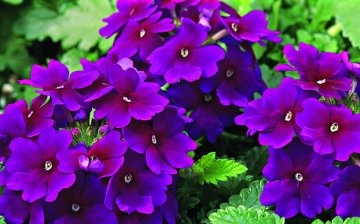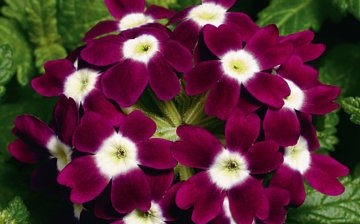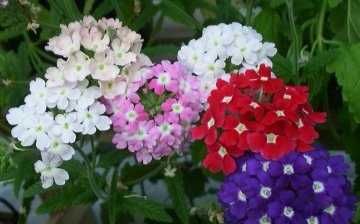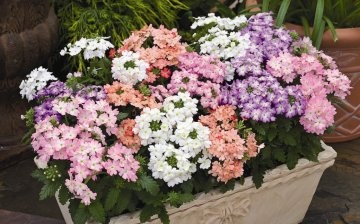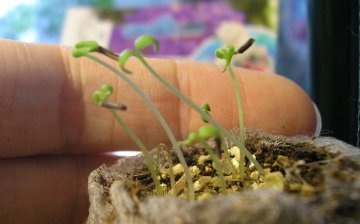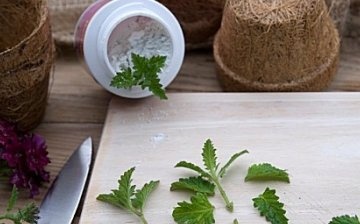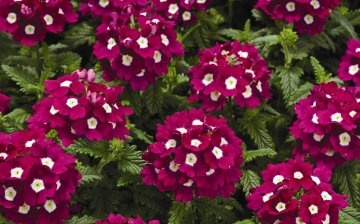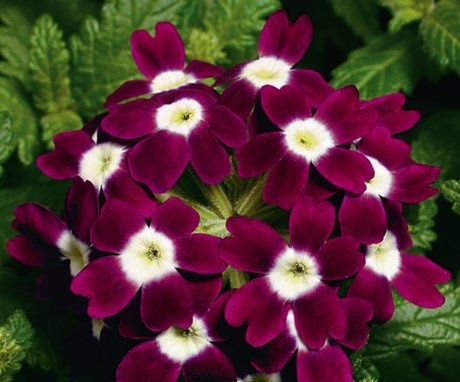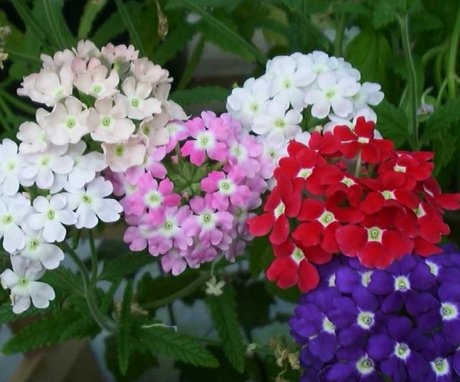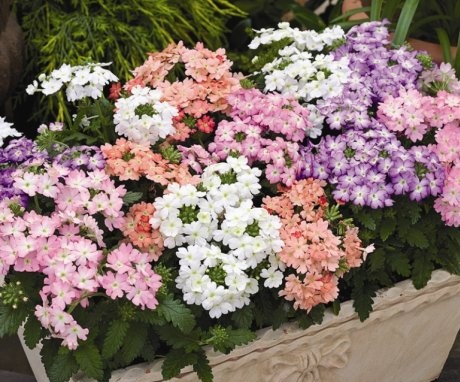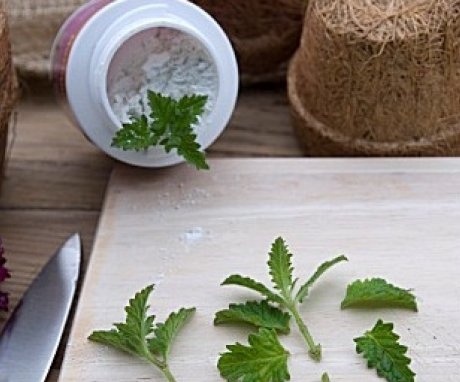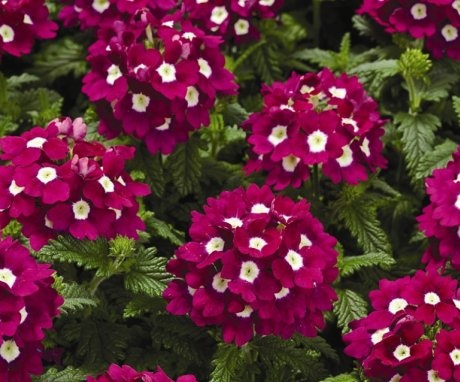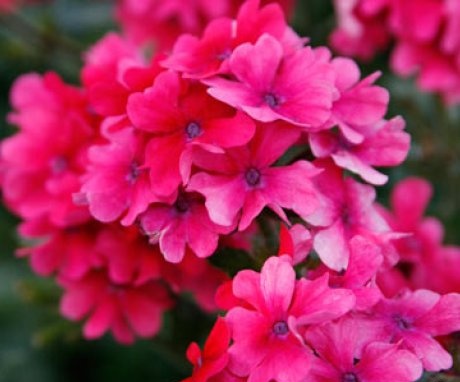Lovely Verbena Care and Flower Growing Tips
Among gardeners verbena considered an extremely picky perennial flower. Even novice summer residents are able to grow these wonderful plants that will decorate any flower bed with their graceful silhouette. A huge plus for verbena in a long flowering period. The beauty of the plant can be preserved until frosty days if the withering buds are cut off in time.
Its varieties are enchanting with beauty and diversity, it endures diseases, and pests do not like it very much. The flower is adorned with loggias, and gardens, and streets of megalopolises.
Content:
- All about vervain
- Types and varieties of flowers
- The best place to plant a plant
- Growing from seeds
- Propagation by cuttings
- Verbena care tips
- How to preserve verbena in winter
All about vervain
Many flowers give us beauty, but little is known about them to ordinary people. Such cute and inconspicuous plants include verbena... The flower has been known since antiquity, although even then very few people guessed about its medicinal properties. In the 19th century, vervain was brought from the tropics and subtropics of America. It was then that she became famous.
There are theories that when new types of flowers were grown, the plant was pollinated, and a new hybrid subspecies arose. This plant can be both annual and perennial.
Verbena has many branches, sometimes the flower reaches a height of 45 centimeters.
The leaves are elongated, resemble a triangle in shape, their edges are endowed with small teeth. Both the stem and the leaves are shrouded in a cloud of grayish coarse hairs.
Verbena has fibrous roots. Flowers are a bit like flowers carnation, in inflorescences can be up to 50. Verbena is white, red, pink, blue, lilac, carmine.
Types and varieties of flowers
There are two large groups.
- Large-flowered plants. Verbena is upright. About forty-three centimeters high. Sometimes it can travel along the ground.
- Compact plants. These flowers spread, only the tips of the stems rise.
Bright and rich colors of flowers attract gardeners. Varieties can vary in height, bud size and structure. bush... In addition to the above varieties, there are hard verbena and Canadian verbena. The first variety of verbena dissolves crimson flowers, the second pleases the eye with pink-lilac inflorescences.
Buenos Aires verbena is wonderful for making bouquets. Its approximate height is a meter, the petals are painted in all shades of amethyst. Verbena often used for bouquets, due to its remarkable property to stand in water for up to ten days.
Most of the flower varieties are resistant to frost and drought.
You can place flowerpots with a plant on the balconies on the south and southeast sides of the house. If the variety is undersized, you can use it to create a border along the path or along the edge of the flower garden. For planting in a group, choose flowers of approximately the same color.
Large-flowered verbena gives 4 of the best varieties to gardeners:
- Defiance is a plant with scarlet flowers, its height is 30 centimeters.
- Cardinal - verbena with fiery inflorescences, height - 40 centimeters.
- Julia has purple flowers with a snow-white eye, height - 40 centimeters.
- Etna has red flowers with a white eye, height - half a meter.
Lovers of small plants will be pleased with the compact varieties of verbena:
- Amethyst is beautiful with its blue petals, its height reaches 30 centimeters.
- Dazler enchants with scarlet inflorescences, height - 25 centimeters.
- The crystal has snow-white buds, its height is 20 centimeters.
- Splendor will surprise gardeners with purple flowers with a snow-white eye, height - 20 centimeters.
The best place to plant a plant
Verbena - plants that will survive in various parts of the garden. You can use them to decorate the territory of the wasteland. And yet the most wonderful plants appear under the bright rays of the sun.
Light is the key to the beauty of a flower.
Leaves and inflorescences will not fade for a long time even under the scorching sunlight. You can also grow verbena in hanging pots or flowerpots - the plant has not many roots.
Growing soil:
- Fertile loamy soils work well with vervain.
- The most important requirement for the earth is its permeability and looseness.
- Even the disadvantages of heavy soils can be corrected by adding a little sand to the soil.
Make a drain - a layer of pebbles, rubble or broken brick - the plants will say "Thank you!" Excess moisture will not accumulate at the roots, this will protect them from decay. There will be no stagnation of water, as the liquid will quickly leave through the drainage system.
Growing from seeds
Cooking somehow the seeds vervain is not needed before sowing. And yet there are certain subtleties. It is possible to plant a plant in open soil only if the weather is good and it will be warm in the coming days. If there is a threat of frost, you should not risk and plant a plant. Better to wait.
Verbena calmly tolerates cold up to minus 3 degrees, but if the column of mercury falls below this level, the plant will die.
If you can't wait to plant a vervain, do for her greenhouse... No need to bury the seeds into the soil. Just scatter them on the ground. If the room is hot, then after a couple of days you will see the result - the seeds will hatch.
Immediately after the first sprouts appear, you need to transfer the containers with plants to a more or less cool room, since the flower does not need too much heat. Try to water the plants very carefully, as if the soil is too wet, they will die. In a week, the first shoots will appear, and in two weeks whole rows of small shoots will begin to turn green.
Propagation by cuttings
Recommendations for flower cuttings:
- If you want to use this method, then take care of the material for planting in advance. Before frost, verbena bushes need to be dug up and transferred together with the earth around the roots to a cool room - this can be either a basement or a balcony. The temperature should not be higher than ten degrees.
- Multiply cuttings flower in early spring. If verbena is needed to decorate a house or a warm winter garden, then grafting performed at any time of the year.
- Shoot tops are the best cuttings. Be sure to check for at least 4 pairs of leaves.
- Treat the cut with crushed charcoal. Remove all the lower leaves, leave only a couple at the top.
- Peat and sand will be an excellent mixture for rooting cuttings. Don't bury the cuttings too much. Deepen them only to the level of the first cut leaves.
- It would be nice to cover the rooted cuttings with cling film - thanks to this method, moisture will be maintained in sufficient quantity.
- The roots will appear in 3 weeks.
Verbena care tips
Verbena is very easy to care for. You just need to cultivate the land, water and feed plant. The flower is very resistant to viruses and harmful insects. Do not allow too dense planting of crops and excessive moisture, as this will lead to the development of diseases.
If you are planting verbena bushes one at a time, then you will need to weed them while they grow.If the plants are planted in a group, then the main fight against weeds will take some time. A thick rug will soon form from small bushes, which there is no point in weeding. There is no sense to constantly loosen the soil. Only if the summer is hot, and abundant watering can you put a little effort in this field. Loosening in this case will help the roots "breathe". Can mulch plants, placing leaves at the roots, which will help to avoid drying out of the earth.
The plant needs to be constantly watered, then only the verbena will grow and bloom.
At the end of July and in August, the number of waterings can be slightly reduced. Complex feeding will be ideal fertilizers for a flower. In addition to organic fertilizing (manure or compost), you can use mineral fertilizers.
By the way, organic matter does not need to be abused. Such fertilizers can be used once a season, as it is possible to oversaturate the soil with nitrogen, and this will lead to the fact that the plant will grow foliage to the detriment of the buds.
How to preserve verbena in winter
Verbena even in the middle zone of our vast country it can be used as a perennial. For this, the plant only needs to be kept at home in winter.
Before the onset of frost, around the end of autumn, you need to bring the flower into the room. If the bush is too large, shorten the shoots exactly to the middle. Place the container with the bush in a bright and sunny room.
It will be nice if the air temperature in the room is not too high - no higher than 15 degrees, otherwise the period of active growing season will begin.
If inflorescences appear in the winter period, verbena should be removed, and excessively elongated long shoots should also be pruned. In the last days of February, the plant needs a short prune and transplant into new soil. Verbena, overwintered at home, will begin to grow rapidly and will be very resilient. And verbena will bloom faster.
More information can be found in the video.



